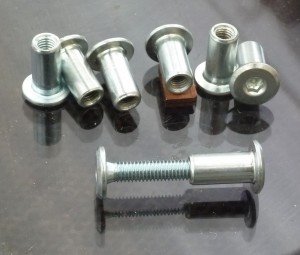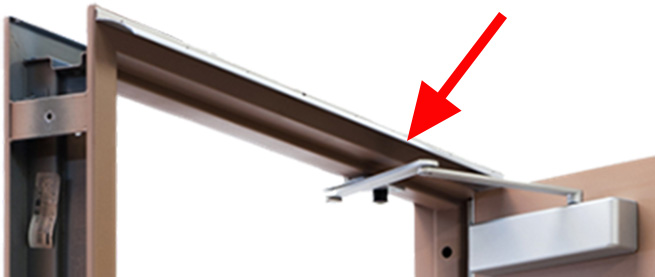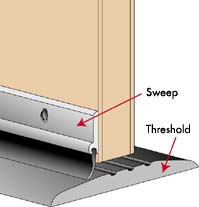I have the honor of wrapping up our first series on door and lock terminology here on LockBytes. So far I think it’s been a success. What do you guys think? I’m closing out this knowledge filled quest with a few items of hardware and some common door and lock terminology that we think will come in handy in the field.
Flush Bolts
- Mounted on the stile (inner edge) of a double door to secure one leaf in place. To secure, the bolt slides up or down into the header/footer of the opening. If you ever have trouble engaging flush bolts, check the hole in the footer of the door to ensure it is free of debris.

Drip Cap
- A horizontal molding installed over the door frame to prevent rain from rusting the metal frame and/or door. It also prevents structural damage by stopping rain from seeping into the frame.

Threshold
- Strip between the opening jambs of a door; used to prevent weather elements from causing internal damage.
Sweep
- Seals the bottom of an exterior door, preventing drafts, water, noise, light and pests from entrance. Usually made of aluminum extrusions with vinyl flaps.

Now onto some common door and lock terminology in regards to electromechanical locks. Electromechanical locks use electric current to operate the latch bolt. They fall into one of two categories:
Fail Safe
- Fail safe locks unlock when power is removed. Power must be supplied to the door/hardware to secure or lock the door.
Fail Secure
- Fail secure locks remain locked when power is removed. In order to unlock the door/hardware power must be supplied.
- Fire doors are required to be fail secure. If fire doors were fail safe, it would allow the pressure created by fire to open the door, thereby, allowing the fire to spread.
We’d love to hear your thoughts on the series and any ideas you have for the next one! Leave a comment in the section below! Happy Friday Folks!
Google
